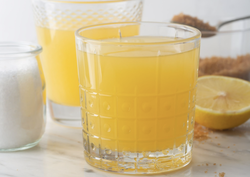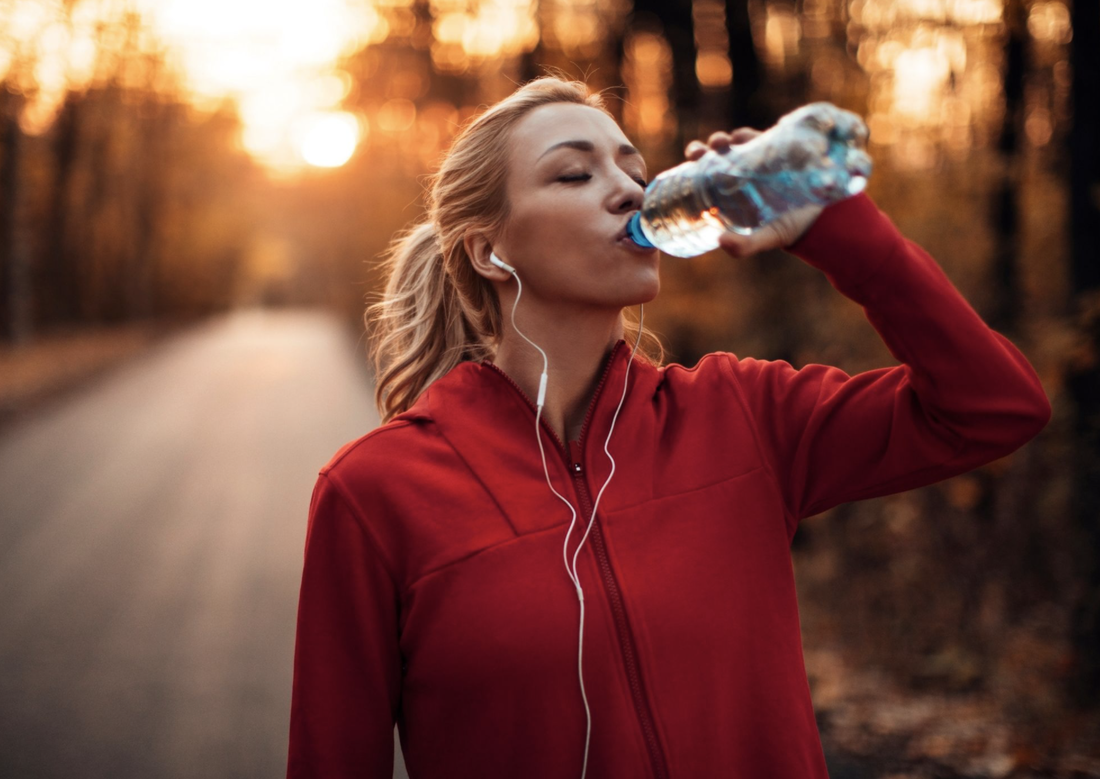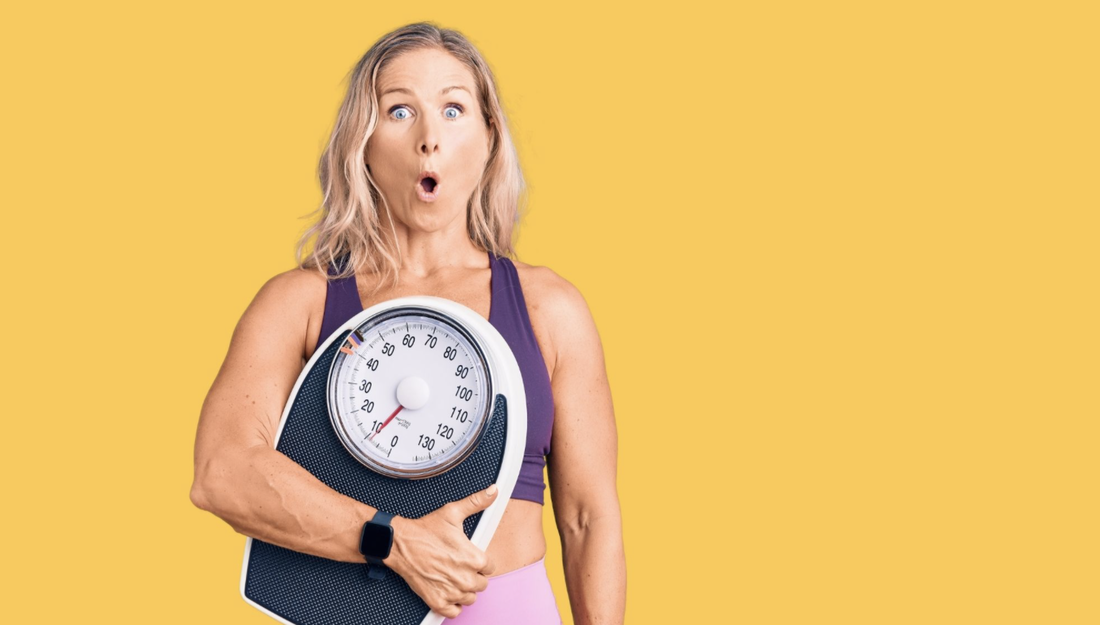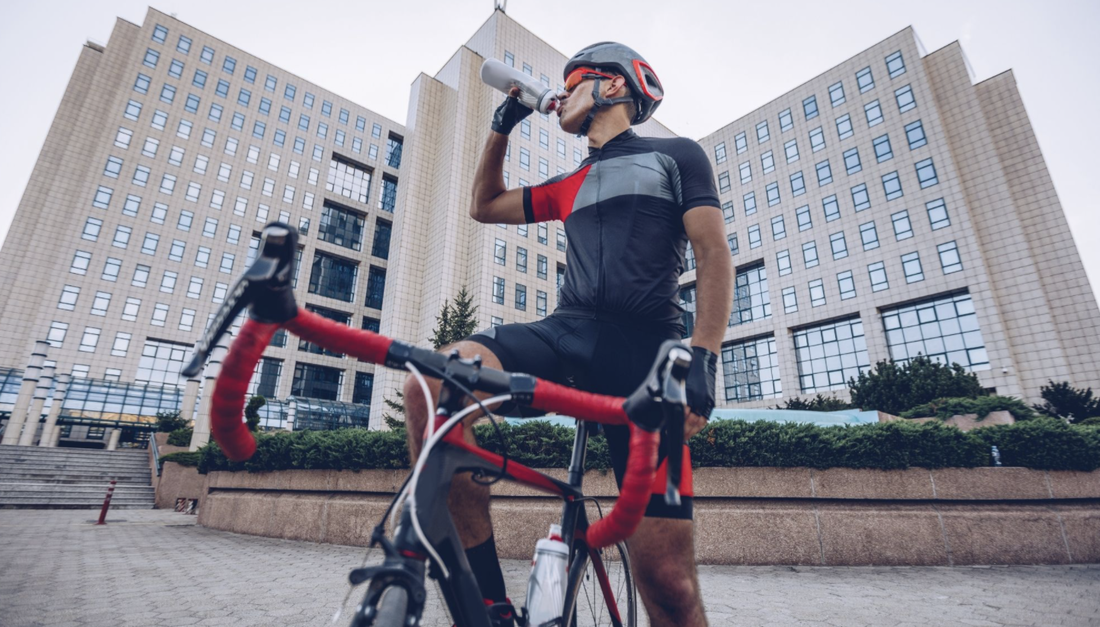|
Most diets concentrate on the macronutrients: carbohydrates, fats and proteins. And for good reason, these are important. However, water, and the micronutrients it carries throughout our body, are equally, if not more important! The human body can survive for weeks without food, but only days without water. Just like our survival, our ability to function optimally depends more on hydration than it does on food. Water plays a crucial role in nearly every bodily function and dehydration is the #1 reason for fatigue. Although water is not nearly as fun of a topic as sugars, fats, or proteins, it cannot be overlooked when aiming to reach optimal health! As endurance athletes, we understand the importance of staying hydrated. But have you ever considered your sodium intake (and reabsorption) as a key factor to your hydration status? In this article, I dive into what it means to be truly hydrated, the importance of sodium for the endurance athletes, and how to understand your sodium needs and how to meet those requirements. WHAT IT MEANS TO BE TRULY HYDRATEDBefore diving into sodium for training and race day, let’s go back to the beginning so we can cover what it means to be truly hydrated. With water being the largest component of the human body, you can imagine how important its role is in obtaining optimal health. Water creates our bodily fluids which aid in digestion, blood circulation, circulation of nutrients, absorption, and regulation of body temperature. When our body fluid levels become depleted, we run the risk of dehydration. Dehydration occurs when you use or lose more fluid than you take in, and your body doesn't have enough water and other fluids to carry out its normal functions. Dehydration will:
When we sweat, we not only lose water but we lose electrolytes as well and that includes sodium. While we may think that more water is what we need, an overabundance of water during training and racing can lead to hyponatremia. Hyponatremia is a condition that occurs when the level of sodium in your blood becomes abnormally low. The over consumption of water causes a dilution of blood sodium levels. Symptoms of hyponatremia include:
At the end of the day, to be truly hydrated you have to make sure you’re taking in an appropriate amount of fluid AND sodium! Sodium is considered an essential electrolyte mineral (essential meaning you must get it from your diet rather than relying on your body to produce it). Along with other electrolytes, sodium helps regulate the body’s fluid balance (which also contributes to your blood pressure levels, another important marker athletes need to pay attention to). Sodium promotes carbohydrate and water uptake in the intestines and reduces the volume of urine post exercise. Both sweat and blood contain high concentrations of sodium. Therefore, if you under-consume sodium, your body has no choice but to shrink your circulating blood volume to compensate. Same is true if you are a heavy sweater. You will lose higher amounts of sodium, and run the risk of your blood volume decreasing if it is not replaced. This will result in lightheadedness, sluggishness, and potentially unconsciousness. THE SALTY REALITY FOR ENDURANCE ATHLETESMost of us have been told to minimize sodium intake. Since sodium has been associated with high blood pressure and cardiovascular events, the FDA recommends less than 2300 milligrams per day. But even FDA admits that overconsumption of sodium is typically the result of the overconsumption of packaged and prepared foods. However, as endurance athletes, our sodium needs are typically higher. As previously mentioned, due to the nature of our sport, we can experience a higher level of sodium loss due to sweating, which means we need to prioritize replacing lost sodium to ensure our body is getting the required amount. Although I personally believe that ALL athletes should be monitoring their blood pressure, those of us who have a history of hypertension, stroke, or heart disease should be particularly vigilant about monitoring your blood pressure. By monitoring your blood pressure regularly, you can dial in the appropriate sodium intake for your body. Athletes’ needs for sodium vary greatly from the general population but they also vary greatly across athletes. This is because our sodium levels are impacted by concentration (i.e., how much sodium is present within sweat) and volume (i.e., the total amount of sweat). According to the American College of Sports Medicine (ACSM), athletes can lose up to 5g of sweat in a single high intensity workout! That’s a lot of sweat, and a lot of electrolytes lost (more than 2x the amount the FDA recommends we consume in a single day!). And this is why taking in salt is crucial during training and race day. My general rule for athletes is to get an idea of their sweat rate by doing an at home sweat rate test (more on that below). Then, rather than forcing water down, athletes should drink to thirst, while keeping in mind that you need to get in as close to as much of the fluids that you lose, alongside sodium. The ACSM recommends that athletes take in fluids that include sodium with a concentration of 0.5-0.7g/L. So how does one make sure they are meeting their sodium requirements? Let’s get into that... MEETING YOUR SODIUM NEED As I already mentioned above, hydration and sodium needs vary across athletes. So step number one is finding out approximately how much water and sodium YOU need, personally. The best way to learn your sweat rate is to get a sweat rate test completed in a lab. You can check out Precision Hydration to learn more about testing centers near you. They also offer an online questionnaire to help you dial in your specific sodium and hydration needs. Lastly, and an option I suggest even if you get tested in a lab, is to perform an at home sweat rate test. How to calculate your sweat rate: 1. Empty your bladder. Weigh yourself before exercise or sauna with minimal clothes on. 2. Perform moderate exercise or sauna for a given number of minutes (15-60). Keep track of the ounces of water consumed during this time. 3. After exercise or sauna, towel off the sweat and re-weigh yourself with minimal clothes on. Your weight loss reflects your fluid loss. For example, if you weighed 150 lbs to start, then weighed 148 pounds after 60 minutes of exercise, then your net weight loss (and therefore fluid loss) is 2 pounds (or 32 ounces fluid) per hour. This should be replaced (both water and minerals) within 2-6 hours after finishing exercise/sauna. If you consumed any water during the test, make sure to add that back into your calculation. Once you know your personal sweat rate, here are some things you can do to ensure you are meeting your sodium needs: Workouts less than an hour: in this case, there is no need to worry about consuming anything special DURING the training session. Instead, focus on consuming nutrient dense foods or just add a generous amount of unrefined sea salt to your post workout meal. Workouts that are more than an hour: in these situations, it would be smart to ingest sodium. I believe that keeping electrolytes, fuel, and hydration separate is ideal. This way, if (and when!) conditions change on race day (ex: hotter than expected, more humid than planned for), you can adjust one or more of these things without affecting the other. For electrolyte replacement during these training sessions, I recommend you stick to salt tablets. They are highly measurable which makes dosing so much easier (vs. salt licks which makes dosing very challenging as every lick is different). If you prefer to add sodium and other electrolytes directly to your water instead, the two brands of electrolyte tablets/powders that I trust are Nuun and Ultima. If an all-in-one fuel is easier for you, there are many over-the-counter beverages to consider when trying to replace your calories, water and electrolyte loss during exercise. My personal favorite is Skratch. I have used both Skratch Hydration Mix and Skratch Superfuel and recommend them both, depending on the race situation. As mentioned before, you need to keep in mind that by using an all-in-one fuel, hydration, electrolyte mix, you lose control over increasing or decreasing one of those elements based on your particular needs in training or on race day. To prepare for this, I still recommend carrying electrolytes, fuel and water separately, or at least have them available in your special needs bag in case you need more of one but not the others. It has been suggested that an electrolyte sports drink with a 4-6% concentration (4-6g carbohydrate/100mL of water) is optimal for proper absorption. A HOMEMADE ELECTROLYTE RECIPE TO TRY  Want to save some money and make an electrolyte sports drink at home? Try this:
No matter what, the best thin you can do with this information is use your training as practice so that once you make it to race day, you know exactly what you need (AND have extra supplies on hand in case the conditions are different than expected). HOW TO KNOW IF YOU NEED MORE OR LESS ELECTROLYTES IN TRAINING OR ON RACE DAY You might be wondering what signs to look for when it comes to staying properly hydrated. First off, always be sure to come into a hard session or race well hydrated. That doesn't mean with coffee. That means drinking AT LEAST 16 ounces of water with a pinch of sea salt before your session, especially if you train in the early mornings. During training or racing, start sipping your water or electrolyte drink immediately and drink at a rate that is comfortable. If you feel nauseous, you likely have over-done electrolytes or under-done your water intake. Either way, the electrolytes in your belly need to be dilutes. At this point, consuming more PLAIN water may help. If you feel sloshing of water in your belly, you have likely over consumed water and not taken on enough electrolytes. Consuming more electrolytes may help as they can pull the water from your belly into the tissues. In this case, I'd highly recommend taking your electrolytes in pill form as to avoid adding more fluids into the belly. If you feel like things are all of sudden getting really hard, this can also be a sign that sodium is low. Consider more electrolytes (and maybe more calories too!). Cramping can be caused from many different factors, including overworked muscles. From a hydration perspective, cramping can be from too little electrolytes and/or too little water. In this case, I would advise you to take a salt capsule and open it into your mouth. The body, especially your taste buds, have an amazing way of telling you what your body needs. If the salt tastes good, I would start by taking more electrolytes. If the salt burns your mouth or tastes bad to you, then you likely don't need more electrolytes and should consume more plain water. MY PERSONAL ELECTROLYTE PLANWhile your plan may be different from mine, I thought sharing my approach would help you understand how to approach your own training and race day. No matter how cold it is, I always take 1 Salt Stick Cap at the top of every hour during training or racing that is longer than 90 minutes. I have an alert set up on my watch to help me remember. As the temperature and/or humidity rise, I consider more Salt Stick Caps. At Ironman Arizona in 2014, I took on 1 Salt Stick Cap every 15 minutes on the bike and every mile on the run. This resulted in 24 Salt Stick Caps on the bike and 25 Salt Stick Caps on the run, totaling 49 salt caps on race day (that’s 10,535 mg of sodium from the Salt Caps alone). In hind-sight, this was a lot. I have done more testing since then and have found less sodium still does the trick and I chafe a lot less! But I never felt bad and finishing in 11:37 and in 17th place for my first ever Ironman wasn’t too shabby either. The bottom line is I tested this amount over and over in training and I knew it worked for me. TYING IT ALL TOGETHER Staying hydrated is something that we all know, as athletes, is important. But now you should understand that true hydration is the result of maintaining an adequate level of electrolytes, mainly sodium. With so much variability across athletes when it comes to sodium needs, performing a sweat rate test and constantly testing your personal sodium intake during training is the sure fire way to set you up for success on race day! REFERENCES: https://www.endurancesportsnutritionist.co.uk/sodium-guide-endurance-athlete/ Mountain SJ, Cheuvront SN, Lukaski HC. Sweat mineral element responses during 7 hours of exercise-heat stress. Int J Sport Nutr Exerc Metab. 2007. 17(6): 574-82 Buono MJ, Ball KD and Folkhorst FW. Sodium ion concentration vs sweat rate relationship in humans. J Appl Physiol. 2007. 103:990-4 https://www.fda.gov/food/nutrition-education-resources-materials/sodium-your-diet https://journals.lww.com/acsmmsse/Fulltext/1996/10000/ACSM_Position_Stand__Exercise_and_Fluid.45.aspx https://pubmed.ncbi.nlm.nih.gov/22110105/ https://cjasn.asnjournals.org/content/2/1/151
0 Comments
Leave a Reply. |
AuthorTiana Rockwell is a certified nutritional therapist, avid endurance athlete and dark chocolate lover. She believes that by eating REAL food, we can balance our body and reach optimal health and wellness! Archives
May 2022
Categories
All
|







 RSS Feed
RSS Feed